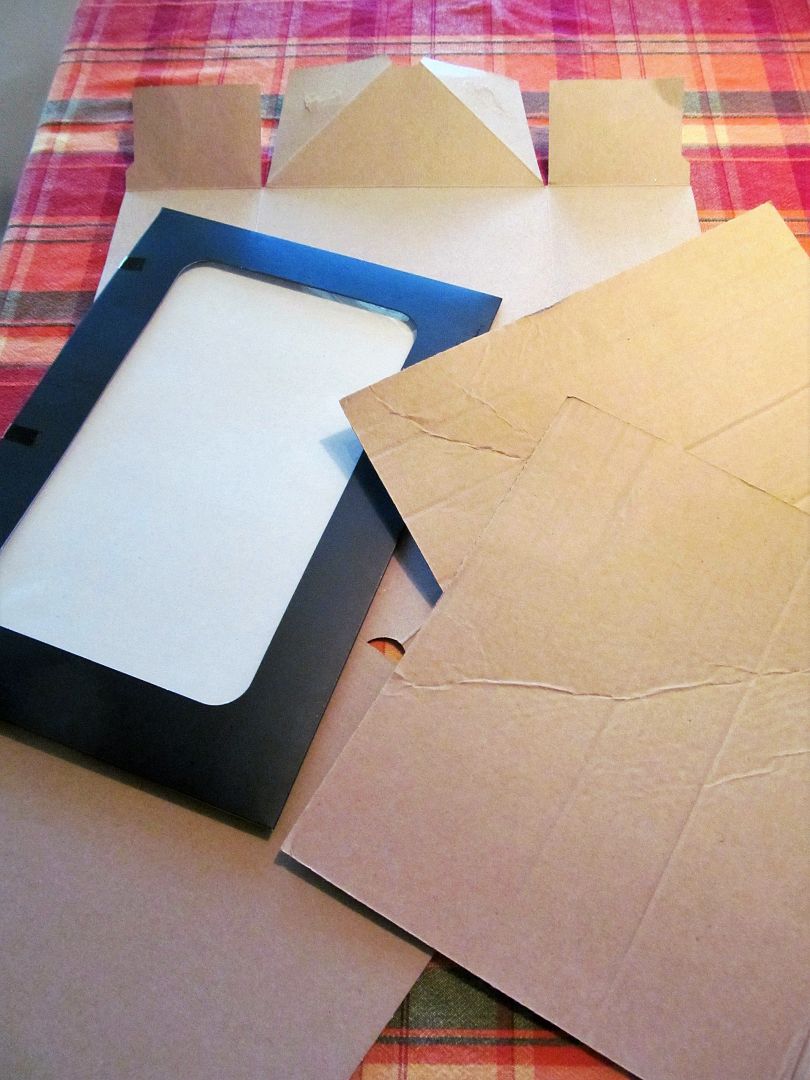 One thing I'd like to do this month is repurpose some cardboard and paper from my recycling bin; this stack here consists of two somewhat dented clothing inserts, a 2017 calendar insert, a lidless chip box and the view-panel sleeve my new laptop skin came in. I have no idea what I'll make out of them, but I figure one project per week should be a decent challenge.
One thing I'd like to do this month is repurpose some cardboard and paper from my recycling bin; this stack here consists of two somewhat dented clothing inserts, a 2017 calendar insert, a lidless chip box and the view-panel sleeve my new laptop skin came in. I have no idea what I'll make out of them, but I figure one project per week should be a decent challenge.Her are some stats from the EPA on recycling:
In 2014, in the United States, about 258 million tons of MSW (municipal solid waste) were generated. Over 89 million tons of MSW were recycled and composted, equivalent to a 34.6 percent recycling rate. In addition, over 33 million tons of MSW were combusted with energy recovery and 136 million tons were landfilled.
In 2014, 89.5 percent of corrugated boxes were recycled. About 61 percent of yard trimmings were composted. Organic materials such as paper and paperboard, yard trimmings and food were the largest component of MSW generated. Paper and paperboard accounted for over 26 percent, and yard trimmings and food accounted for another 28.2 percent. Plastics comprised about 13 percent of MSW; rubber, leather and textiles accounted for over nine percent; and metals made up nine percent. Wood followed at over six percent, and glass over four percent. Other miscellaneous wastes made up approximately three percent of the MSW generated in 2014.
Recycling and composting of MSW results in greenhouse gas (GHG) emissions reduction. In 2014, the 89 million tons of MSW recycled and composted provided an annual reduction of over 181 million metric tons of carbon dioxide equivalent emissions, comparable to the annual emissions from over 38 million passenger cars." (You can find the entire report by clicking here.)
My tiny town has started weekly recycling pick-ups, so I could just dump everything in the bin now, but I think it's still important to find new ways to reuse things. Recycling anything costs money for hauling, sorting, storing and processing. Repurposing costs little to nothing, and allows you to make something yourself versus buying it new, so you can also save money.
You don't have to make a huge art project out of recyclable materials, either. For example:
1. Instead of buying note pads or shopping lists, save whatever you print out, flip it to the blank side and stack it in a clipboard -- instant scratch paper. You can also cut it down to a smaller size and stack it in an open box.
2. If you have a shredder, you can shred your junk mail and use it as packing material for the next package you ship.
3. Keep a used envelope to store coupons for your next trip to the market. These also make great holders for lottery tickets, extra bookmarks, sticker sheets, or anything flat.
There are plenty of resources online to help you, too. Here's a blog post by Francesco Mugnai about projects made from recycled cardboard that is particularly fabulous (I love the chandelier and the cat furniture).
In the weeks ahead I'll report back on my repurposing projects as I finish them, and show you what I did to reuse the materials.

Cardboard gets a lot of uses at my house before it goes in our compost bins. Big pieces are great as weed blockers, and for working under cars if the pavement is wet or rocky.
ReplyDelete